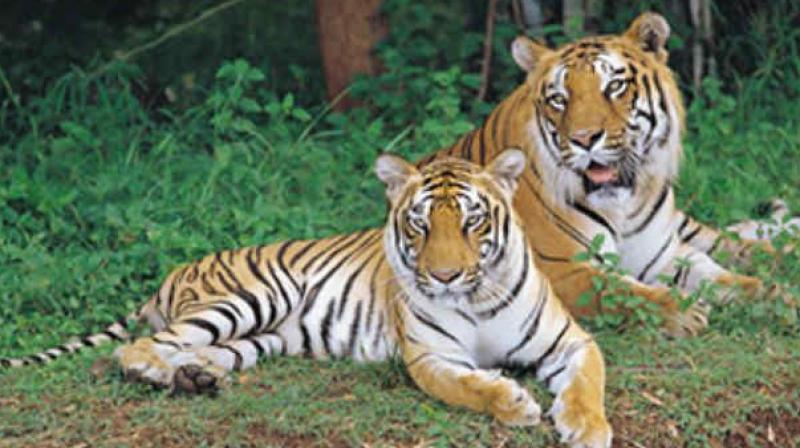Visakhapatnam: Tiger census shows rise in carnivores
Vegetation cover also increased from medium to dense.

VISAKHAPATNAM: The population of the large carnivores like leopard, bear and wild dogs in the Vizag forest area might have increased if the improved vegetation cover observed during the All India Tiger Estimation-2018 conducted from January 22 to 28 is anything to go by. Speaking to Deccan Chronicle, Chief Conservator of Forests Mr Rahul Pandey said, “The Phase 1 of the tiger estimation exercise has already been conducted. As part of this exercise, we examine the vegetation cover which apparently has improved from medium to dense category and this is one of the potential indicators for healthy wildlife population in a given area. However, we can know about the exact carnivore population when the data collected during these days is analysed. This will be done in about another 10 days. Already training is being imparted to the data entry operators in this regard.”
Tiger estimation exercise not only does a head count for tigers but also enumerates large carnivores to ensure the availability of prey and habitat indices for the big cat to flourish. There are four phases of the estimation exercise and the first and second phases are mostly carried out outside the tiger reserve forest area. Phase III and IV are conducted when tiger signs are observed in a forest area, using camera traps.
Phase I consists of carnivores sign survey, transect marking and transect walking. Phase II is all about data collection. Explaining about the process of the survey, Mr Pandey said, “In the carnivore sign survey, the field forest staff covers 5 km each day for 3 days in a beat. Signs of carnivores are recorded and occupancy estimation is carried out based on tiger signs. Later over a period of two days, transects are marked, it could be one transect (minimum 2 km) per beat or more in case of different habitat types (grassland, woodland) and extent of areas.”
Transect walking is done for three days, early in the morning at dawn. On the return walk, pellet densities using a belt transect and vegetation data and human disturbance on plots have to be recorded only on one day. Citing a reason behind improved vegetation cover, he said, “Podu cultivation which is a form of shifting cultivation was degrading the forest land. However, a good number of people in Paderu region are going for coffee, pepper crops.”

